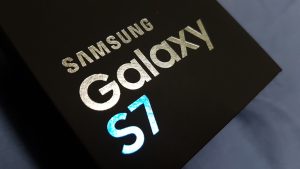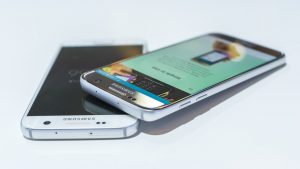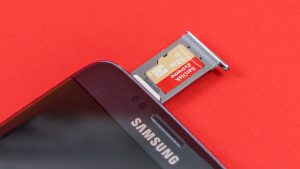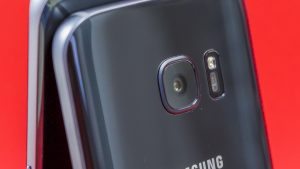Samsung S7 / Samsung S7 Edge Analysis
Samsung has had a bitter sweet year this 2016. Bitter in the sense that one of their flagship devices, the Samsung Galaxy Note 7 started exploding out of the blues. On one faithful day in my office, there I was with my colleagues with the television on and CNN on mute, then someone glanced at the TV and saw the breaking news that a Samsung galaxy note 7 exploded. Months later a dozen to a hundred of Samsung Galaxy note 7 exploded, sometimes causing severe damage to the user.
The issue of the note 7 got so serious that recently, Samsung called for a recall for all note 7 devices and advised all users to power down their phones. As at the day of writing this (December 19), the company is officially disabling the phone through a software update. The company has also put in place an exchange program to aid the recalling of the phone.
Sorry for side tracking, back to the topic for today which is the Samsung Galaxy S7. Lets quickly take a look at why this phone is an absolute beast and rated one of the best phones to buy in 2016.

Design & Body
The Samsung galaxy weighs 152 grams, which is pretty light for a phone of its quality and caliber. The dimensions are 142.4 x 69.6 x 7.9 mm of which there is a corning gorilla glass 4 back panel at the front and back of the phone. In the design of the phone, Samsung can be faulted with producing strikingly similar design to the Samsung galaxy S6, but then again, its predecessor was one of the best looking phones of 2016.
Moving on to the sim functionality, the Samsung S7 has two options, the single sim (nano sim) option and the Dual Sim (Nano-SIM, dual standby option). The phone has a nano sim tray which now holds a MicroSD slot and a microphone while the bottom of the phone is home to the micro USB charging port, headphone socket and another microphone.
With regard to the protection of the phone in terms of glass display, the Samsung S7 has a corning Gorilla Glass 4 both in front and at the back, serving as its protection with a metal rim just resting in between. The camera sits comfortably at the back with the glass body, and the flash placed by its side. Two volume buttons sit on the left side of the phone (facing front), with the power/lock or standby button at the opposite side.
The bottom of the phone is home for the micro USB charging port, headphone socket and another microphone. Samsung’s flagship phone also boasts a really fast fingerprint sensor which serves as an added layer of security.

Display
The Samsung Galaxy S7 similar to its predecessor has a 5.1 inch QHD panel measuring a 72.1% screen to body ratio and a Super Amoled capacitive touch screen. Amoled screens are considered better than LCD screens by some critics, and one phone manufacturer that has increased the popularity of amoled screens is Samsung. Amoled screens consist of a thin layer of organic polymers that are very sensitive when in contact with electricity. They light up immediately when zapped with electric currents. One major advantage of amoled screens is that they add to the sleek design of phones as they can be extremely thin and do not require a backlight. With this, amoled screens are able to produce very deep blacks that does not require the screen pixels to be constantly on. Shutting off pixels can help in saving electricity and battery life in phones and tablets. Regarding the resolution, not much has changed from the previous version. The Samsung galaxy S7 still maintains a 1440 x 2560 pixels resolution.
Memory
The Samsung Galaxy S7 has an impressive ram of 4GB, meaning that you can multi task as you wish without the phone lagging or frustrating you by hanging. The phone also has an internal memory (ROM) of 32 or 64 GB depending on the version you purchase. Note, the 64GB version is more expensive than the 32GB version. Notwitstanding the gigantic amount of memory the phone automatically avails its purchasers, the Samsung S7 has an allowance for a micro SD card which can take up to 256GB micro SD card. Impressive right? Yes indeed.

Platform & Performance
The Samsung S7 runs on default Android OS V 6.0 (marshmallow) and has a Qualcomm MSM8996 Snapdragon 820 chipset. It is worthy of note that in Europe, the Samsung S7 does not come with a Qualcomm MM8996 Snapdragon 820 chipset but a Samsung Exynos 8890 chipset. Whichever it is though, both chipsets are powerful and paired with a Mali T880 GPU. The Qualcomm MM8996 Snapdragon 820 comes with 8 cores, four running at 2.6GHz and the other four running at 1.59GHz. The Exynos 8 Octa on the other hand has eight CPU cores including Samsung custom-designed CPU core based on 64-bit ARMv8 architecture. The 8 cores are broken into a Quad custom core running at 2.3GHz and Quad Cortex – A53 running at 1.6 GHz.
With all that power, there is only one result, which is super-fast speed. Coupled with the 4GB ram, the Samsung galaxy S7 is an absolute beast when it comes to performance.
Camera
The Samsung S7 again is killing it in terms of camera. Although there was a slight drop in the pixels count from its predecessor (16mp to 12mp), the S7 is still a top dog in the camera business, even performing better than its predecessor with greater pixel count. Samsung says the reason for this is that the pixels of Samsung S7 are now much larger than those of its predecessor. Samsung calls it dual pixel.
Enough of the pixel count, let’s move on to the autofocus. The Samsung Galaxy S7 autofocus is superb, with a face detection autofocus aided by an optical image stabilization (OIS) and a LED flash. In terms of video recording, the Samsung Galaxy S7 holds its own with video frames ranging a 2160p@30fps, 1080p@60fps, 720p@240fps, HDR, dual-video recording. Note, the 2160p is a resolution supported by UHDTV products and which offers four times the definition of 1080p. Also, fps means frames per second, and it is the rate at which an imaging device displays consecutive images. An fps of 30, 60 and 240 is really good for a mobile device.



Battery Life
A lot of critics complained about the battery life of its predecessor (Samsung S6). It looks like Samsung listened to complaints as they upgraded the battery from a 2,600mAh battery to a 3,000mAh. This is great, but as its predecessor, it is a non-removable battery. I personally do not like non removable batteries but it seems that is the way major phone manufacturers design their phones. The reason for my dislike is that in a couple of years or thereabout, you are forced to change your phone when the battery starts developing internal problems.
The battery is definitely a positive feature of the S7 as you can expect a longer battery life, but be aware that although it is a 3,000mAh battery it is a typical charge every night battery. The Samsung S7 is basically the same as the Samsung S7 Edge. The only differences are in terms of battery, weight and screen.
The dimensions of Samsung Galaxy S7 is 142.4 x 69.6 x 7.9 mm (5.61 x 2.74 x 0.31 in) while that of Samsung S7 Edge is 150.9 x 72.6 x 7.7 mm (5.94 x 2.86 x 0.30 in). The Samsung Galaxy S7 weighs 152 grams while the Samsung Galaxy S7 edge weighs a slightly higher 157 grams. The battery of the Samsung S7 is 3,000mAh while that of Samsung Galaxy S7 Edge is 3,600mAh.
With regard to the screen, the screen of both models are basically the same, with the Samsung S7 edge having an additional feature of a curved edge screen.
Samsung S7 Edge is definitely a phone to look out for, and I am keen about it. We would see how my goal turns out, and comparison with other phones to make my decision.






Leave a Reply